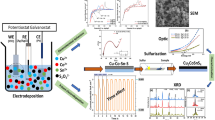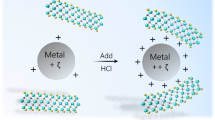Abstract
It is found that high-energy materials (HEM), modified with nanoscale fulleroid-type carbon (astralen), such as PETN—pentaerythritol tetranitrate, LS—lead styphnate, and NCP— pentaammine (5-nitro-tetrazolato-N2) cobalt(III) perchlorate, exhibit an increased susceptibility to laser diode radiation. Modified HEM were obtained by the original methods: NCP and PETN—in the crystallization process in astralen suspension and modified LS—directly in the synthesis process in the presence of astralen nanoparticles. The most efficient way to separate astralen clusters is to disperse them under intense ultrasound exposure in a liquid medium at a specific radiation intensity of at least 2–4 W/cm3. Therefore, to ensure the nanoscale, astralen was ultrasonicated in isopropyl alcohol or aqueous isopropyl alcohol and used as a suspension for the production of modified HEM. For the tests, we used a laser initiation system based on a laser diode on several emitting crystals with the radiation wavelength of 976 nm, maximum permissible radiation output power in the continuous mode of 60 W, and radiation coupling-out into the optical fiber with a core diameter of 105 μm and a numerical aperture of 0.15. After equipping the experimental sample of the laser blasting cap (LBC) with photosensitive HEM, the fiber-optic cable was installed in its shell, consisting of the initiating optical fiber with a diameter of 105 µm and the recording fiber with a diameter of 500 µm, each having polished ends and a common end block. The compositions were tested on the LBC model at different values of the laser diode radiation power, the radiation power density limit for HEM, both modified with astralen and standard ones of the same dispersion, was determined. It was found that the introduction of astralens into HEM contributed to a significant increase in their sensitivity to laser radiation not only due to the absorption of radiation quanta by astralen nanoparticles with the formation of “hot spots,” but also to the specific mechanism, characteristic of fulleroid nanoparticles: singlet excited oxygen production reaction.



Similar content being viewed by others
REFERENCES
Aleksandrov, E.I., Voznyuk, A.G., and Tsipilev, V.P., Combustion, Explosion and Shock Waves, 1989, vol. 25, no. 1, pp. 1–7. https://doi.org/10.1007/bf00758226
Aleksandrov, E.I., Voznyuk, A.G., and Tsipilev, V.P., Fizika Goreniya i Vzryva, 1989, vol. 25, no. 1, pp. 3–9.
Aduev, B.P., Belokurov, G.M., Nurmukhametov, D.R., and Nelyubina, N.V., Combustion, Explosion and Shock Waves, 2012, vol. 48, no. 3, pp. 361–366. https://doi.org/10.1134/s001050821203015x
Belousov, V.P., Belousova, I.M., Bespalov, V.G., Budtov, V.P., Grigor’ev, V.A., Danilov, O.B., Zhevlakov, A.P., Zgonnik, V.N., Kalintsev, A.G., Krys’ko, A.V., Mironova, N.G., and Sosnov, E.N., Ponomarev, A.N., Opt. Zh., 1997, vol. 64, no. 9, pp. 83–85.
Shames, A.I., Katz, E.A., Panich, A.M., Mogilyansky, D., Mogilko, E., Grinblat, J., Belousov, V.P, Belousova, I.M., and Ponomarev, A.N., Diamond Relat. Mate., 2008, vol. 18, nos. 2–3, pp. 505–510. https://doi.org/10.1016/j.diamond.2008.10.056
Belousov, V.P., Belousova, I.M., Budtov, V.P., Danilov, V.V., Danilov, O.B., Kalintsev, A.G., and Mak, A.A., Opt. Zh. , 1997, vol. 64, no. 12, pp. 3–337.
Didyukov, A.I., Kulagin, Yu.A., Shelepin, L.A., and Yarygina, V.N., Kvant. Elektron., 1989, vol. 16, no. 5, pp. 892–3904.
Bagrov, I.V., Kiselev, V.M., Kislyakov, I.M., Starodubtsev, A.M., and Burchinov, A.N., Optic. Spectroscop., 2015, vol. 118, no. 3, pp. 412–416. https://doi.org/10.1134/s0030400x15030078
Ponomarev, A.N., Proc. of the International Conference: Theory and Practice of Technologies for Manufacturing Products from New Metal Alloy Composite Materials, Moscow: Znaniye, 2004, pp. 508–518.
Danilov, O.B., Belousova, I.M., Mak, A.A., Belousov, V.P., Grenishin, A.S., Kiselev, V.M., Krys’ko, A.V., Murav'eva, T.D., Ponomarev, A.N., and Sosnov, E.N., Proc. of SPIE, 2004, vol. 5479, pp. 29–34. https://doi.org/10.1117/12.558184
Brozdnichenko, A.N., Ponomarev, A.N., Pronin, V.P., and Rybalko, V.V., J. Surface Invest.: X-Ray, Synchrotron and Neutron Techniques, 2007, vol. 1, no. 1, pp. 110–112. https://doi.org/10.1134/s1027451007010223
Ponomarev, A.N. and Figovsky, O.L., Sci. Israel – Technol. Adv., 2010, vol. 12, no. 3, pp. 54–57.
Bailey, D. and Wright, E., Practical Fiber Optics, Amsterdam: Elsevier, 2003, p. 288.
Zeman, S. and Jungova, M., Technology of Explosives, Pardubice: University of Pardubice, 2019.
Klapötke, T.M., Chemistry of High-Energy Materials, Berlin: Walter de Gruyter GmbH., 2017. https://doi.org/10.1515/9783110536515-202
Author information
Authors and Affiliations
Corresponding authors
Ethics declarations
No conflict of interest was declared by the authors.
Rights and permissions
About this article
Cite this article
Vedernikov, Y.N., Fedotov, S.A., Smirnov, A.V. et al. Synthesis of High-Energy Materials Modified with Nanoscale Carbon and Investigation of Their Sensitivity to Laser Radiation. Russ J Gen Chem 92, 1137–1142 (2022). https://doi.org/10.1134/S1070363222060275
Received:
Revised:
Accepted:
Published:
Issue Date:
DOI: https://doi.org/10.1134/S1070363222060275




